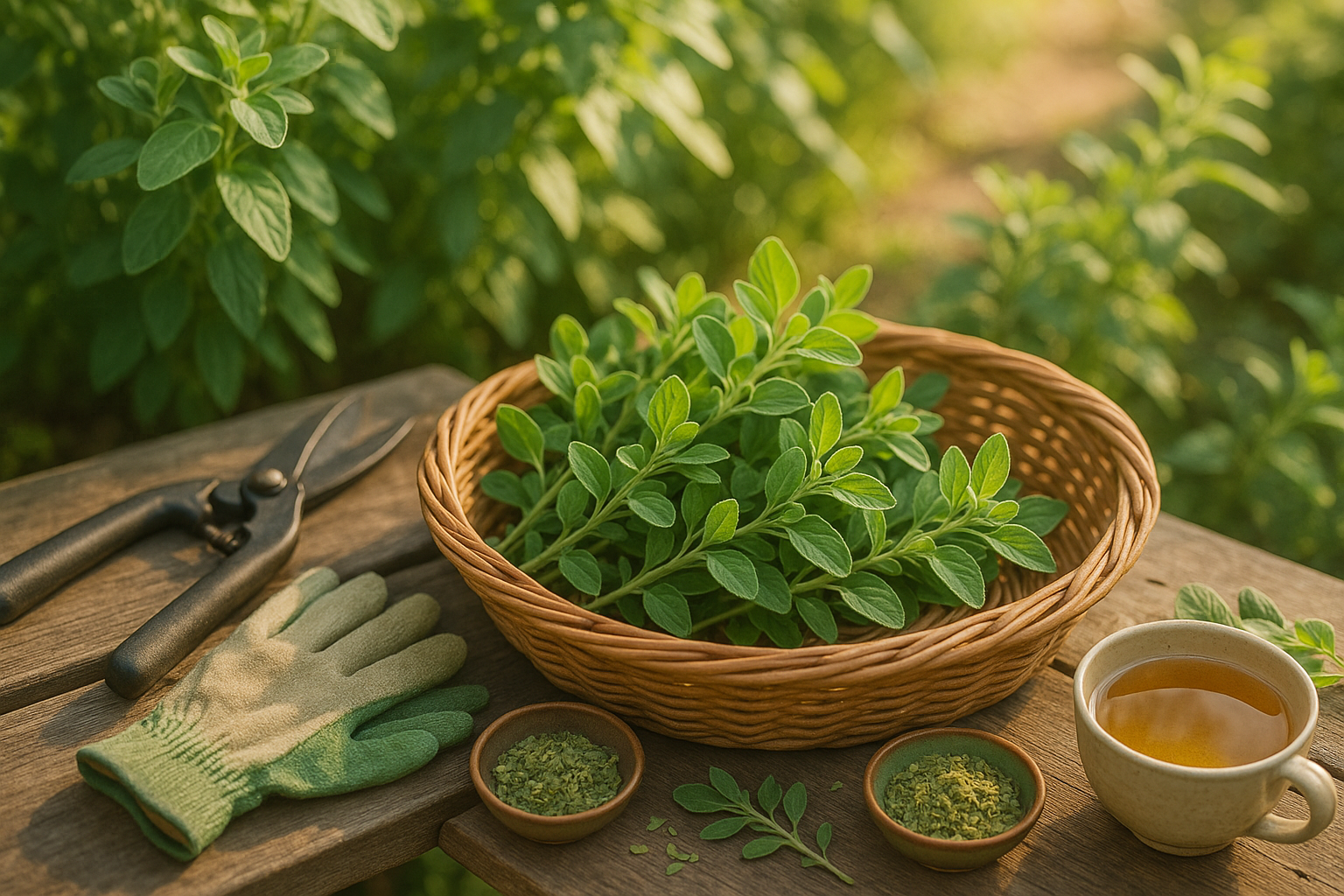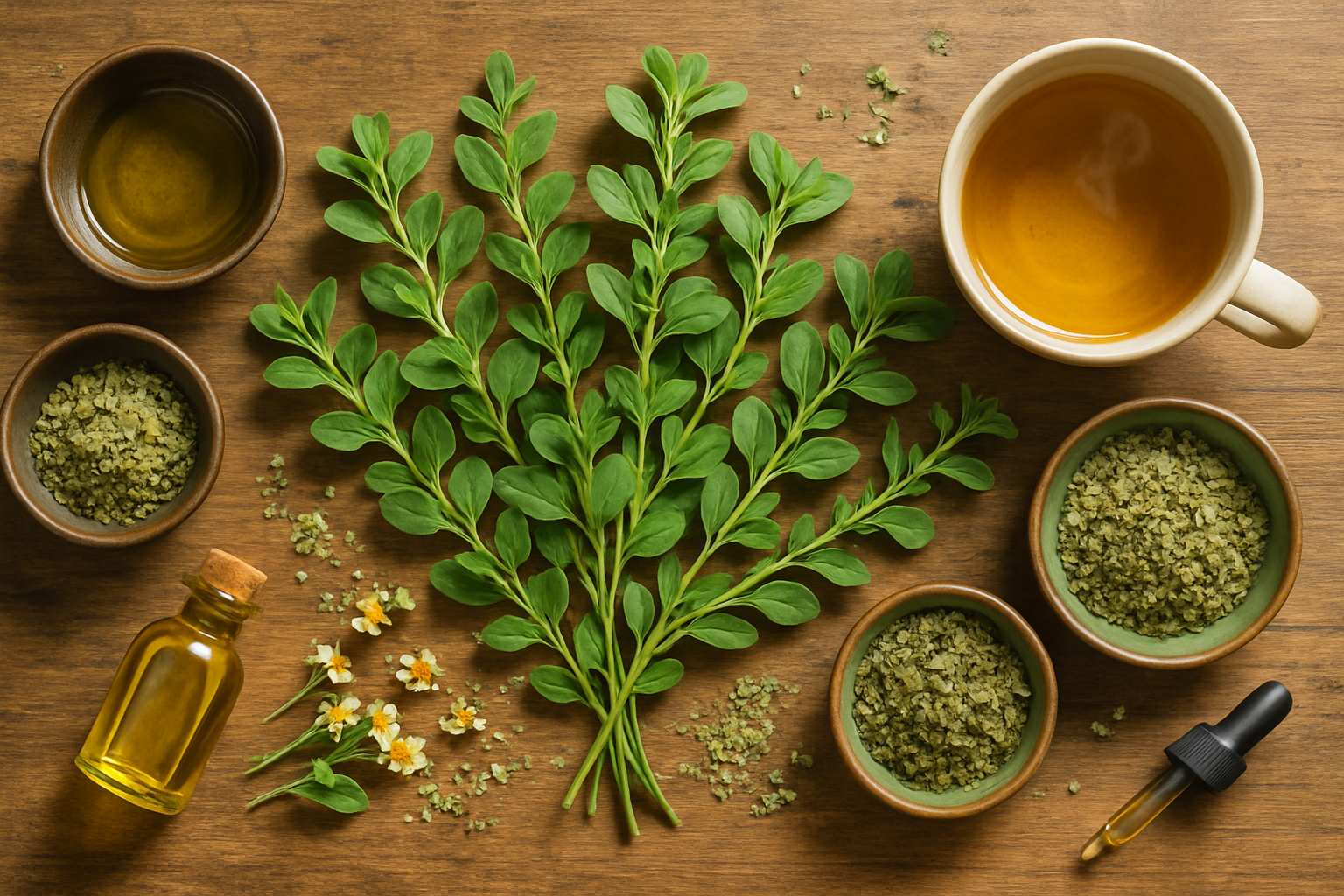Introduction to Marjoram in Herbal Remedies
Marjoram herbal uses have been valued for centuries, making this fragrant herb—known scientifically as Origanum majorana—a staple in both kitchens and traditional medicine cabinets worldwide. Marjoram’s gentle, slightly sweet flavor and inviting aroma make it a favorite for seasoning soups, stews, and meats. At the same time, its mild nature is soothing when used as a natural remedy.
Historically, marjoram was cherished by ancient Greeks and Romans not only for enhancing food but also for its reputed ability to ease digestive troubles, calm nerves, and support the respiratory system. Today, herbalists and wellness enthusiasts turn to marjoram for remedies ranging from teas that promote relaxation to oils that soothe sore muscles.
As both a culinary delight and a medicinal ally, marjoram bridges the gap between flavor and wellness in everyday life. In this post, we’ll take a closer look at marjoram’s benefits and the science behind its uses, explore easy ways to incorporate it into your home remedies, and share essential tips for using it safely and effectively. Whether you’re a seasoned herbalist or simply curious about natural wellness, understanding marjoram’s herbal uses can open up a world of gentle, practical remedies for your health and home.
Understanding Marjoram: Botanical Profile & Active Compounds

Marjoram (Origanum majorana) is a fragrant, bushy perennial herb native to the Mediterranean region, often confused with its close relative oregano (Origanum vulgare). While both belong to the mint family, marjoram’s leaves are smaller, softer, and a paler shade of green, with a notably sweet, floral aroma compared to oregano’s more pungent, earthy scent. Marjoram grows 1 to 2 feet tall and produces tiny, white or pale pink flowers in clustered spikes.
Its gentle flavor and tender leaves make it a favorite in culinary and herbal preparations, but marjoram also stands out for its powerful therapeutic properties. The plant is rich in beneficial compounds, including flavonoids like apigenin and luteolin, which act as antioxidants to help combat cellular damage. Marjoram’s essential oil contains a variety of terpenes, such as sabinene, terpinene, and thymol, responsible for its calming and antimicrobial effects. Another important active compound is rosmarinic acid, known for its strong anti-inflammatory potential.
Together, these components provide a variety of marjoram herbal uses: the herb can soothe digestive upsets, ease muscle tension, and support restful sleep. For instance, a simple marjoram tea or topical oil can harness these benefits to relax the body and mind. The synergy of marjoram’s natural constituents distinguishes it from similar herbs like oregano, making it a reliable choice for gentle, effective herbal remedies in everyday wellness routines.
Traditional Uses and Modern Research
Marjoram has held a cherished spot in herbal lore for centuries, especially prized for easing digestive issues, calming anxious minds, and relieving minor aches and pains. Traditionally, healers brewed marjoram tea to soothe upset stomachs, reduce bloating, and stimulate appetite—practices still common in folk medicine today. Its gentle, calming aroma also made it a staple in herbal sachets and baths designed to reduce stress and promote relaxation, while topical applications like infused oils or warm compresses were popular for easing headaches and muscle discomfort.
These time-tested marjoram herbal uses have sparked interest in modern research, which has begun to support some of these age-old claims. For example, marjoram essential oil has demonstrated antispasmodic effects in lab studies, backing its traditional use for digestive troubles and muscle tension. Some research also suggests marjoram may have mild anxiolytic (anxiety-reducing) properties, likely due to its impact on neurotransmitters such as GABA, though more studies are needed to confirm this in humans.
Additionally, investigations into marjoram’s antioxidant and anti-inflammatory effects point to its pain-relieving benefits, especially when used topically or through aromatherapy. Despite advances in medicine and a shift toward evidence-based remedies, marjoram’s gentle, nurturing qualities keep it a favorite herb for those seeking natural support for stress and digestion.
Whether sipped as tea, inhaled as a calming scent, or applied as a soothing oil, marjoram continues to bridge traditional herbal wisdom with modern wellness, trusted for its ability to comfort both body and mind.
Making Herbal Remedies with Marjoram: Practical Recipes
Marjoram herbal uses shine in a variety of easy-to-make remedies perfect for everyday wellness. To start, marjoram tea is one of the simplest and most popular options. Steep one to two teaspoons of dried marjoram leaves or a fresh sprig in a cup of boiling water for 5–10 minutes, then strain. Enjoy this soothing tea before bed to promote relaxation and ease mild digestive discomfort; it’s gentle enough for daily use—up to three cups per day.
For a more concentrated preparation, try a marjoram tincture. Chop fresh marjoram leaves and loosely fill a small glass jar. Cover completely with high-proof vodka or brandy, seal, and store in a cool, dark place for four to six weeks, shaking occasionally. Strain the liquid into a dropper bottle. The typical adult dosage is 1–2 ml (about 20–40 drops) diluted in water, taken up to three times a day. This tincture is especially helpful for easing menstrual cramps or minor anxiety.
Marjoram-infused oil is ideal for topical use, such as massage. Fill a clean jar with dried marjoram, pour in olive or sweet almond oil until the herbs are fully submerged, and let the mixture infuse for two to four weeks in a warm spot, shaking every few days. Strain and store the oil in a dark bottle. This oil can be massaged into sore muscles, used as a chest rub during a cold, or added to a warm bath. Be sure to do a skin patch test first to check for any sensitivity.
Each of these marjoram remedies offers practical ways to incorporate the herb’s gentle, aromatic benefits into your daily routine, making it easy to turn this humble herb into valuable tools for wellness and comfort.
Benefits and Therapeutic Uses: What Science and Tradition Say

Marjoram has been cherished for centuries as a gentle yet effective herb in various natural healing traditions, and its uses are now supported by modern research. Traditionally, marjoram herbal uses included calming the nerves and soothing emotional stress. Many herbalists recommended marjoram tea before bedtime for its subtle sedative effects, making it a staple in nighttime routines for those struggling with anxiety or restless sleep.
Today, studies suggest that compounds in marjoram, such as carvacrol, may influence neurotransmitters like serotonin and dopamine, bolstering its reputation as a natural mood supporter. Additionally, marjoram is well-known for aiding digestion—a benefit recognized since ancient Greek and Roman times. Drinking marjoram tea or adding fresh marjoram to meals can help ease bloating and gas, as its natural oils gently stimulate digestive juices. Some people, like chef Mia from Oregon, swear by a warm cup of marjoram tea after heavy dinners, claiming it “prevents that uncomfortable fullness” and helps them unwind.
Mild pain relief is another traditional use of marjoram, particularly for headaches and muscle aches. Folk remedies often featured marjoram essential oil in massage blends or hot compresses. Scientific studies now support these uses, noting that marjoram’s anti-inflammatory and analgesic properties can reduce discomfort when applied topically (diluted with a carrier oil). For example, Sarah, a yoga instructor, says rubbing diluted marjoram oil on her neck alleviates minor stiffness after long classes.
The herb also boasts immune-supporting properties; it contains antioxidants and antimicrobial agents that help protect against common colds and infections. In folk medicine, marjoram-infused steam was often inhaled to relieve sinus congestion—a tradition echoed in modern aromatherapy sessions. While marjoram isn’t a cure-all, both traditional wisdom and emerging science agree it’s a gentle, versatile ally in promoting relaxation, digestion, pain relief, and immune resilience.
Precautions and Possible Side Effects of Marjoram
While marjoram is well-known for its many marjoram herbal uses, it’s important to be aware of relevant precautions and potential side effects before incorporating it into your wellness routine. Marjoram may interact with certain medications, especially blood thinners and diabetes drugs, as it can affect blood clotting and blood sugar levels. If you take medications regularly, be sure to consult your doctor or pharmacist about possible interactions.
Pregnant and breastfeeding women should avoid medicinal amounts of marjoram, since some research suggests it might influence hormones or even trigger menstruation, which could pose risks during pregnancy. For most adults, marjoram is generally safe when used in culinary amounts or short-term as a tea. However, excessive use or long-term supplementation hasn’t been thoroughly studied and might cause digestive upset or allergic reactions in rare cases.
As a general guideline, stick to doses commonly found in food or follow product labels carefully when using extracts or oils. Consulting a qualified healthcare practitioner or licensed herbalist is always recommended, especially for those with chronic health conditions or who are already taking prescription medications.
For reliable and research-backed information, consider resources like the National Center for Complementary and Integrative Health (NCCIH) or the American Herbalists Guild. These organizations offer trustworthy guidance to help you use marjoram safely and effectively.
Conclusion & Encouragement to Explore Marjoram
Marjoram has earned its place in the herbal toolkit thanks to its gentle yet versatile qualities. From soothing teas that aid digestion to calming essential oil blends for relaxation, marjoram herbal uses go far beyond the spice rack. Its mild flavor and adaptable nature make it the perfect starting point for anyone new to crafting natural remedies at home.
Trying a homemade marjoram tea or adding the herb to a simple salve is an easy and safe way to begin experiencing its benefits. As you become more comfortable with marjoram, don’t hesitate to explore how it pairs with other gentle herbs like chamomile or lavender to support your overall wellness goals.
Incorporating marjoram into your daily routine is a wonderful step toward a more natural, holistic approach to health and self-care. Let your curiosity guide you and discover the wealth of herbal remedies ready to enhance your well-being.
